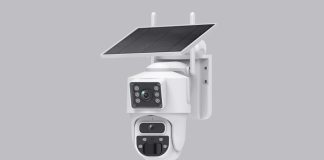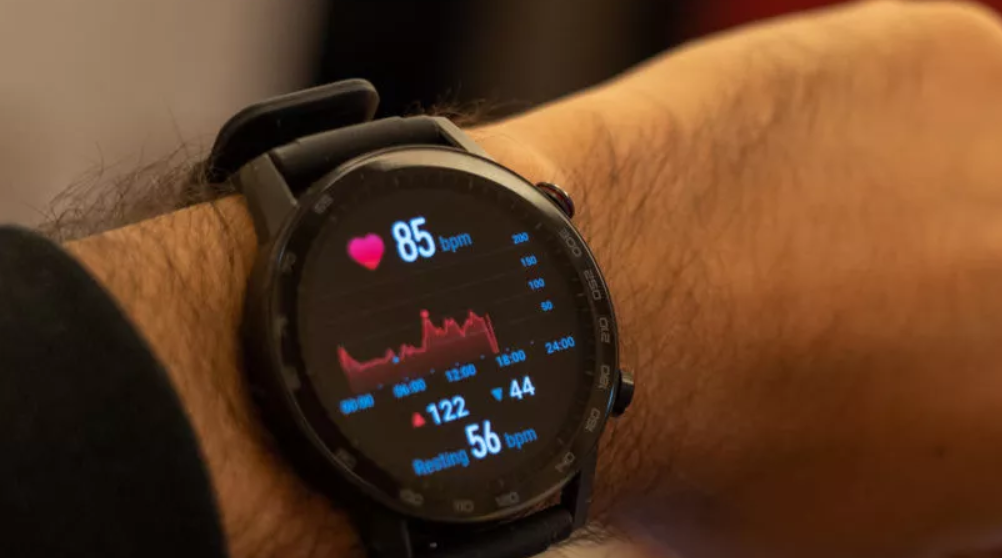Digital marketing changes fast. What worked yesterday might fail tomorrow. After testing hundreds of campaigns and analyzing what actually moves the needle, these 11 strategies consistently deliver results.
No fluff, no outdated tactics—just proven methods that work right now.
1. AI-Powered Personalization
Generic marketing is dead. Today’s consumers expect experiences tailored to their specific needs, and AI makes this scalable even for small businesses.
The real power of AI in digital marketing campaigns isn’t just recommendation engines. It’s about predicting what customers need before they know it themselves. When someone visits your site three times without buying, AI can trigger a personalized email with exactly the right message to convert them.
Start simple with AI personalization:
-
Use dynamic email content that changes based on past behavior
-
Create website experiences that adapt to visitor preferences
-
Test different messages for different audience segments automatically
-
Let machine learning optimize your ad targeting
The tools have become surprisingly affordable. Platforms like Dynamic Yield and Optimizely aren’t just for enterprise anymore. Even Google’s free Analytics Intelligence uses machine learning to surface insights about your audience.
What makes AI personalization work is the data you feed it. Track everything—website interactions, email engagement, purchase history. The more data points you have, the better your AI can predict what each customer wants next.
Most importantly, personalization isn’t about being creepy. It’s about being helpful. Show customers you understand their needs without making them feel watched.
2. Interactive Content
People don’t want to read another blog post. They want to engage, participate, and get immediate value. Interactive content transforms passive visitors into active participants.
Think about the last time you took an online quiz or used a calculator tool. You probably spent several minutes engaged, maybe even shared your results. That’s the power of interactive content—it creates an experience, not just information consumption.
Creating a successful digital marketing campaign with interactive elements doesn’t require a massive budget. Start with these formats:
Calculators and estimators: Help people solve real problems. ROI calculators, savings estimators, and pricing tools give immediate value while capturing qualified leads.
Quizzes and assessments: People love learning about themselves. Personality quizzes, skill assessments, and diagnostic tools keep visitors engaged while collecting valuable data.
Interactive infographics: Turn static data into explorable experiences. Let users click, hover, and discover information at their own pace.
AR filters and experiences: Social platforms make AR accessible to everyone. Create filters that showcase your products or reinforce your brand message.
The key is solving a specific problem or answering a burning question. Generic interactive content fails. Specific, valuable interactive content converts visitors into customers.
3. User-Generated Content (UGC)
Your customers are your best marketers. They create authentic content that resonates far better than anything your marketing team could produce.
User-generated content works because it’s real. When someone sees a customer using your product in their actual life, it carries more weight than any professional photoshoot. This authenticity drives trust, and trust drives sales.
Building a UGC strategy that actually works:
Create a memorable branded hashtag, but make it natural. Don’t force something clever if simple works better. The best hashtags become part of your community’s vocabulary.
Incentivize participation without making it feel transactional. Feature customer content on your channels, create contests with meaningful prizes, or simply engage authentically with those who mention you.
Make it easy for customers to share. Remove friction from the process. If you sell physical products, include hashtag reminders in your packaging. For services, send follow-up emails asking for feedback and photos.
Always secure rights before using content in paid advertising. A quick message asking permission protects you legally and often delights customers who are thrilled to be featured.
Digital marketing campaign examples 2025 show that brands built on UGC spend less on content creation while achieving higher engagement rates.
4. Voice Search Optimization
Half of all adults use voice search daily, yet most businesses completely ignore this channel. Voice queries are fundamentally different from typed searches—they’re conversational, longer, and often include local intent.
Optimizing for voice search isn’t complicated, but it requires rethinking your content strategy. People don’t speak the way they type. They ask complete questions and expect immediate, accurate answers.
Focus on natural language patterns:
Answer real questions: Structure content around actual questions people ask. “How do I…” and “What’s the best way to…” queries dominate voice search.
Win featured snippets: Voice assistants pull answers from Google’s featured snippets. Format your content with clear, concise answers that directly address search queries.
Prioritize local SEO: Voice searches often include “near me” or location-specific queries. Keep your Google Business Profile updated, maintain consistent business information across the web, and actively collect reviews.
Speed matters more than ever: Voice search favors fast-loading pages. Every second of delay reduces your chances of being selected as the voice answer.
Small business digital marketing campaign strategies must include voice optimization. It’s an underutilized channel where you can outrank bigger competitors by being more relevant and specific.
5. Social Commerce
Social media isn’t just for brand awareness anymore. Platforms have evolved into complete shopping destinations where discovery and purchase happen in the same session.
The beauty of social commerce is reducing friction. Instead of seeing a product on Instagram, leaving the app, searching for the website, and then buying—customers can purchase without ever leaving their feed.
Each platform requires a different approach:
Instagram Shopping: Focus on lifestyle imagery that shows products in context. Tag products naturally in your posts, stories, and Reels. The platform favors content that feels native, not promotional.
TikTok Shop: Create entertainment first, sales second. Product demonstrations, unboxing videos, and creator partnerships work because they don’t feel like ads.
Facebook Shops: Leverage the platform’s robust targeting to reach specific audiences. Create collections for different customer segments and use Messenger for personalized customer service.
Pinterest Shopping: Perfect for discovery-phase customers. Create boards that inspire and educate while subtly featuring your products.
The key to social media digital marketing campaign tips is understanding that social commerce isn’t about pushing products. It’s about creating content so engaging that products sell themselves.
6. Micro-Influencers
Forget celebrity endorsements. Micro-influencers with smaller, engaged audiences deliver better results at a fraction of the cost.
Why micro-influencers outperform mega-influencers:
Their audiences trust them. These aren’t celebrities promoting products they’ll never use. They’re real people sharing genuine recommendations with communities they’ve built over years.
Engagement stays high. Smaller audiences mean influencers can actually respond to comments and build real relationships with followers.
Content feels authentic. Micro-influencers create content that matches their usual style, making promotions feel natural rather than forced.
Finding the right micro-influencers isn’t about follower count. Look for:
-
Consistent engagement on their posts
-
Audiences that match your target demographic
-
Content quality that aligns with your brand
-
Genuine enthusiasm for your product category
B2B digital marketing campaign best practices show that industry experts and thought leaders often outperform traditional influencers for business audiences.
Structure partnerships for long-term success. One-off posts rarely work. Build ongoing relationships where influencers become genuine brand advocates.
7. Privacy-First Marketing
Privacy regulations keep tightening. Third-party cookies are disappearing. But this isn’t a crisis—it’s an opportunity to build deeper customer relationships.
Brands that respect privacy see unexpected benefits. When customers willingly share data because they trust you, that data becomes far more valuable than anything collected through tracking.
Building a privacy-first strategy:
Be transparent: Tell customers exactly what data you collect and how you use it. Make privacy policies readable, not legal documents that no one understands.
Offer value exchanges: Give customers clear reasons to share information. Exclusive content, personalized recommendations, or member benefits create willing participation.
Collect zero-party data: Ask customers directly for their preferences instead of inferring from behavior. Preference centers and progressive profiling build rich profiles over time.
Make control easy: Let customers manage their data and communication preferences easily. The easier you make it to unsubscribe, the more likely people are to stay subscribed.
Email digital marketing campaign optimization becomes more effective when based on explicit preferences rather than assumed interests.
8. Video-First Strategy
Video dominates every platform. YouTube, TikTok, Instagram Reels, LinkedIn video—if you’re not creating video content, you’re invisible.
But video-first doesn’t mean Hollywood production values. Authentic, helpful video content outperforms polished corporate videos every time.
Video formats that actually convert:
Short-form educational content: Teach something valuable in under 60 seconds. Quick tips, hacks, and insights keep viewers coming back.
Behind-the-scenes footage: Show the human side of your business. People connect with people, not logos.
Customer testimonials: Real customers sharing real experiences. Nothing builds trust faster.
Live streaming: Raw, unedited interaction creates connection. Q&A sessions, product launches, and virtual events bring audiences closer to your brand.
Mobile digital marketing campaign strategies must prioritize vertical video. Most social video consumption happens on phones, so create content formatted for mobile screens.
The secret to video success isn’t perfection—it’s consistency. Regular, valuable video content builds audiences over time. Start with your smartphone and simple editing tools. Focus on helping your audience, not impressing them with production value.
9. Marketing Automation
Marketing automation isn’t about replacing human connection. It’s about scaling personalized experiences that would be impossible to deliver manually.
The power of automation lies in timing. Send the right message at the exact moment someone is ready to hear it. This isn’t spam—it’s relevance at scale.
Automation workflows that actually work:
Welcome sequences: New subscribers need nurturing. A series of emails introducing your brand, sharing your best content, and building trust converts subscribers into customers.
Behavioral triggers: When someone downloads a guide, visits a pricing page, or abandons a cart, automation can respond instantly with relevant follow-up.
Re-engagement campaigns: Don’t let subscribers go cold. Automated campaigns can win back inactive users before they’re lost forever.
Customer onboarding: Help new customers succeed with your product through automated education and support.
Digital marketing campaign automation tools have become incredibly sophisticated yet easier to use. The key is starting simple and expanding based on what works.
Remember that automation should enhance human interaction, not replace it. Use it to handle repetitive tasks so you can focus on building real relationships.
10. Omnichannel Integration
Your customers don’t think in channels. They interact with your brand wherever convenient—website, email, social media, physical stores. Your marketing should be just as fluid.
Omnichannel isn’t about being everywhere. It’s about creating consistent, connected experiences across the channels that matter to your customers.
Building seamless experiences:
Unified data: Every interaction should inform the next. When someone browses your website, their email should reflect those interests. When they contact support, that history should be visible.
Consistent messaging: Your brand voice, visual identity, and core messages should remain constant while adapting to each platform’s unique characteristics.
Cross-channel journeys: Guide customers naturally between channels. Someone might discover you on social media, research on your website, and purchase through email. Make each transition smooth.
Channel-appropriate content: Respect platform conventions while maintaining brand consistency. What works on LinkedIn won’t work on TikTok, but both should feel like the same brand.
Digital marketing campaign budget calculator considerations should account for the complexity of managing multiple channels. It’s better to excel on fewer channels than fail on many.
11. Real-Time Analytics
Monthly reports are obituaries. By the time you analyze last month’s data, opportunities have passed and problems have compounded. Real-time analytics let you optimize while campaigns are running.
Modern digital marketing campaign performance metrics require immediate visibility into what’s working and what isn’t. This isn’t about obsessing over vanity metrics—it’s about making data-driven decisions quickly.
Focus on metrics that matter:
Engagement quality over quantity: Track meaningful interactions, not just clicks. Time on site, scroll depth, and return visits indicate real interest.
Conversion paths, not just conversions: Understand the full journey, not just the final click. Which combinations of touchpoints drive the best results?
Sentiment and context: Numbers don’t tell the whole story. Monitor brand mentions, review sentiment, and competitive landscape in real-time.
Technical performance: Site speed, error rates, and user experience metrics directly impact campaign success. Monitor and fix issues immediately.
Set up intelligent alerts for significant changes. You don’t need to watch dashboards all day, but you should know immediately when something important happens.
Digital marketing campaign planning template should include response protocols for different scenarios. Know what to do when metrics spike or crash.
Start Here
Trying to implement all 11 strategies at once guarantees failure. Start with three that align with your business goals and resources.
For limited budgets: User-generated content, micro-influencers, and marketing automation deliver strong returns without massive investment.
For growing businesses: Video content, omnichannel integration, and real-time analytics help scale what’s already working.
For established brands: AI personalization, privacy-first approaches, and voice search optimization maintain competitive advantage.
Success in 2025 won’t come from using every new tactic. It comes from executing the right strategies exceptionally well. Choose your focus, commit to excellence, and measure everything.
The digital marketing landscape will continue evolving. These strategies work today because they’re built on fundamental principles: respect your audience, provide genuine value, and adapt based on real data.
Start with one strategy. Master it. Then expand. The best digital marketing campaign is one that grows stronger over time.




















